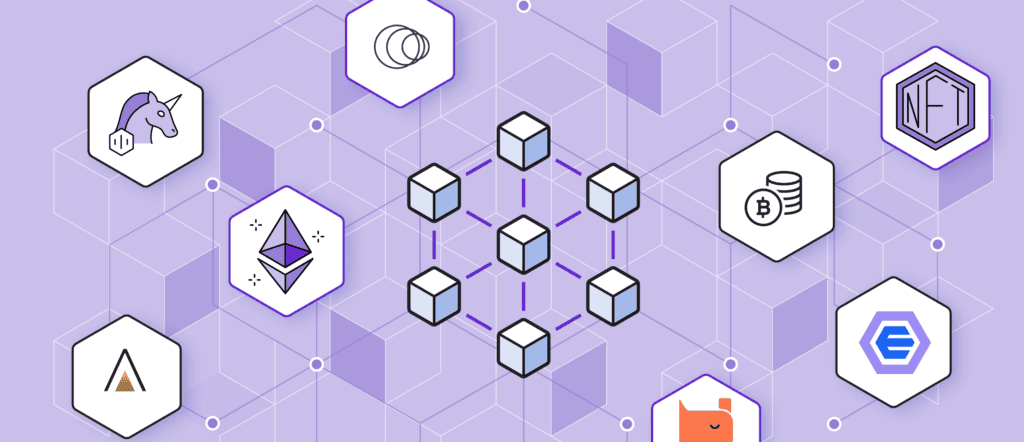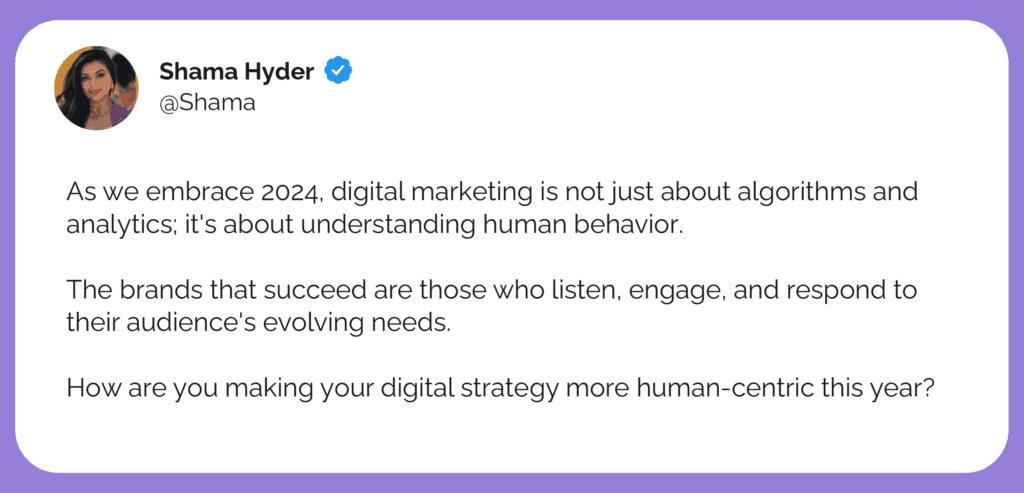Welcome to Web3: the future of the internet.
This third installment of the World Wide Web aims to shift control from companies to users. The decentralization of data, the foundation of blockchains, and the metaverse are all significant characteristics of this upcoming digital era.
What is Web3?

Ethereum co-founder Gavin Wood coined the term “Web3” (or, originally, “Web 3.0”) back in 2014, sparking endless online discourse about the future of the internet. Today, from media outlets to big names, Web3 is widely considered to be that future. Focused on decentralizing data, Web3 aims to improve user privacy, give individuals more control over their digital communities, and transform the digital landscape to create a more immersive experience.
McKinsey succinctly summarizes the main differences between Web3 and Web2, highlighting the features that separate it from the current iteration of the internet:
“Because of the collective nature of blockchains, if and when Web3 fully arrives—elements of it are already in place—it will, in theory, signal a new era of the internet, one in which use and access are controlled by community-run networks rather than the current, centralized model in which a handful of corporations preside over Web2.”
While there’s still much to do before Web3 becomes a reality, investors and executives in the space hope to change how we think about and use the internet forever. However, recent data shows that momentum and excitement for the technology have slowed. During the second quarter of 2023, Web3 startups raised just over $1.8 billion, a drastic decline from the $7.5 billion raised during the same period in 2022.
Why? The answer actually supports Web3: most of the world focused on all things AI in 2023, likely diverting attention (and money) from Web3. However, this was necessary to actualize the future Web3 proponents hope to create. As businesses fine-tune AI and machine learning, Web3 can use that information to expand and enhance its offerings.
Public interest in Web3 remains, and now’s the perfect time for marketers to start learning, ideating, and planning their Web3 marketing strategies.
We believe Web3 will change the scope of marketing for good. Here are four ways that will happen and four marketing strategies you can use to make Web3 work for you.
Four Ways Web3 Will Disrupt Marketing
1. The decentralization of Web3 will lead to transparent marketing.
One of Web3’s primary goals is to make the internet more accessible and secure. The fancy tech term for this change is “decentralization.”
Why is this important? It’s because, as data scientist Clive Humby famously observed, data is the new oil. By 2025, people will create 180 ZB (that’s zettabytes, so add 21 zeros to that 180) of data, which will be worth roughly $229.5 billion. With numbers like these, it’s no wonder companies—and big tech companies in particular—have been eager to tap in and fuel up.
Decentralization reduces the power of these companies by keeping user data private, accessible and shareable only by the user.
Blockchain technology supports data decentralization. Deloitte describes the positives of Web3 blockchain technology as enabling “secure, transparent, and trustworthy transactions among complete strangers without intermediaries.”
While these protections may complicate marketers’ jobs, they will also make marketing strategies more transparent. Web3 will require marketers to focus on building relationships with prospects through direct communication. They will learn about their target audience by tracking how they engage with brands publicly on social media platforms, and they will discover their audience’s likes and dislikes through interactive content like surveys and polls. As a result, marketers will be more open about the data they look for and how they plan to use it in future marketing tactics.
Decentralization represents a significant shift in the way the internet operates. This human-centric approach will encourage marketers to treat their prospects as individuals rather than numbers in a dataset.
2. Host a virtual conference on a decentralized platform.

Consumers want to feel connected to elements of the brand when making purchasing decisions. Leveraging AI and machine learning processes can help companies create immersive virtual experiences for consumers, stakeholders, and employees.
Of course, there’s also the metaverse, “the next evolution in social connection and the successor to the mobile internet.” This 3D, digital world will allow internet users to work, shop, play, learn, and connect by attending digital events, shifting the user experience to try new things using virtual reality technologies, among other digital platforms. While interesting strategies have already been implemented in the metaverse by B2C brands like Chipotle and Louis Vuitton, B2Bs are still exploring opportunities within this changing virtual landscape.
In the meantime, marketers should focus on building their brand’s digital presence through strong B2B social media marketing strategies, digital PR, and ensuring all websites are optimized for search. If you want to begin dabbling in immersive virtual experiences, we recommend considering virtual storefronts, digital training, sharing educational content online, hosting virtual events, and exploring decentralized social networks like Bluesky Social or Mastodon.
Related reading: 9 Best Practices for Hosting a Virtual Event
3. Web3 will emphasize content marketing.
Currently, content creators and marketers are often at the mercy of platform algorithms and an oversaturation of content. This lack of control and transparency has hindered the creation of successful, shareable content and fair compensation.
Web3 promises to change that.
The decentralization of the web should create an equal playing field and restore power to content creators. With Web3, strong content will be recognized and valued for its ability to produce more realistic experiences and foster deeper connections. Mary Pratt, a writer for TechTarget, details some potential business benefits, including delivering more accessible and lifelike experiences to the masses, creating heightened social connections and interactions, improving collaboration, and enhancing testing and training opportunities.
What does this mean for marketers? First, continue driving both organic and paid content for your brands. This new, open ecosystem will bring many more opportunities for content visibility across your marketing campaigns. Second, focusing on improving personalized experiences becomes even more important. Trialing this new tech with your employees before moving on to your customers is an excellent way to identify content that works before adding it to your marketing efforts.
4. Focus on creating a strong community.
Finally, Web3 will focus on giving users a sense of community. The decentralization of data means companies will have to rebuild consumer trust. It’s less about what users can do for the brands they support and more about what these brands can do for their supporters.
Related reading: The Ultimate Guide to Community Management For Marketers
Shama Hyder, our CEO at Zen Media, sums up this idea in a post on X:
“The brands that succeed are those who listen, engage, and respond to their audience’s evolving needs.”

Community-driven marketing will continue to play a big role in 2024 and beyond. Online communities are more important and powerful than ever when it comes to engaging with your customers. Create a community by listening to your followers, responding to their needs, and finding new ways for them to connect and relate to each other.
And don’t overlook the significance of dark social. Make a plan now, if you haven’t already. It’s important for brands to understand that while modern content consumption happens publicly, it is shared privately. As apps like Discord, WhatsApp, and Slack continue to attract users for personal and professional reasons, marketers will have to make the most of dark social sharing, leveraging these new online behaviors to build community.
Related reading: Discord: What is it and How Can You Use it for Marketing?
Hybrid events, NFTs (non-fungible tokens), and virtual experiences are also popular realms marketers can explore to discover what works best for their audience, increase community engagement, and make the most of digital experiences. Not all individuals like the same content or experiences, and the entire purpose of Web3 is to build community through individualism.
Four Web3 Marketing Strategies for 2024
As Web3 marketing continues to gain momentum in 2024, B2B brands that embrace this new technology and adopt innovative strategies can position themselves to stand out in a crowded marketplace. Here are four Web3 marketing strategies that B2B brands can use to give themselves a competitive advantage:
1. Launch a blockchain-based loyalty program.
One way to incentivize customers to engage with your brand is to create a blockchain-based loyalty program that rewards users with digital tokens or cryptocurrencies for their loyalty and engagement. This user engagement strategy can create a sense of community and excitement around your brand while driving customer retention and repeat business.
2. Host a virtual conference on a decentralized platform.
With the rise of virtual events, B2B brands can leverage decentralized platforms to host a cutting-edge conference that offers attendees a unique, engaging, and immersive experience. Using blockchain-based platforms enables you to create an environment that allows attendees to connect securely and transparently.

3. Partner with blockchain startups.
To stay ahead of the curve in the Web3 space, B2B brands can partner with innovative blockchain startups committed to pushing the boundaries of what’s possible with decentralized technologies. By collaborating with these startups, you can tap into their expertise and gain access to new marketing channels and Web3 marketing strategies.
4. Develop thought leadership content on decentralized technologies.
Creating thought leadership content on decentralized technologies is a great way to establish your brand as an established, trusted voice for your target audience during this time of transformation and transition. By sharing insights and perspectives on blockchain, cryptocurrencies, and decentralized technologies, you can build trust and credibility with your customers while positioning your brand as a leader in the Web3 space.Are you interested in reimagining your B2B marketing strategies for the upcoming era of Web3? Let’s talk.





